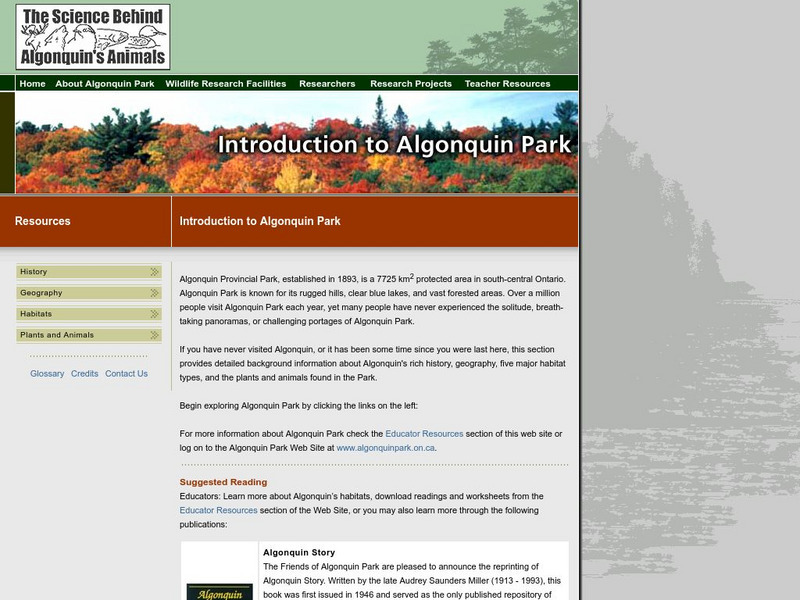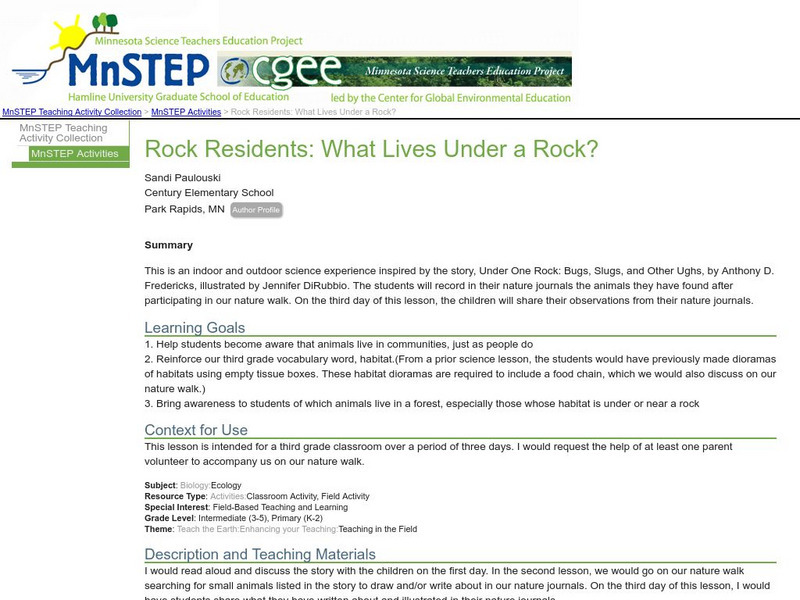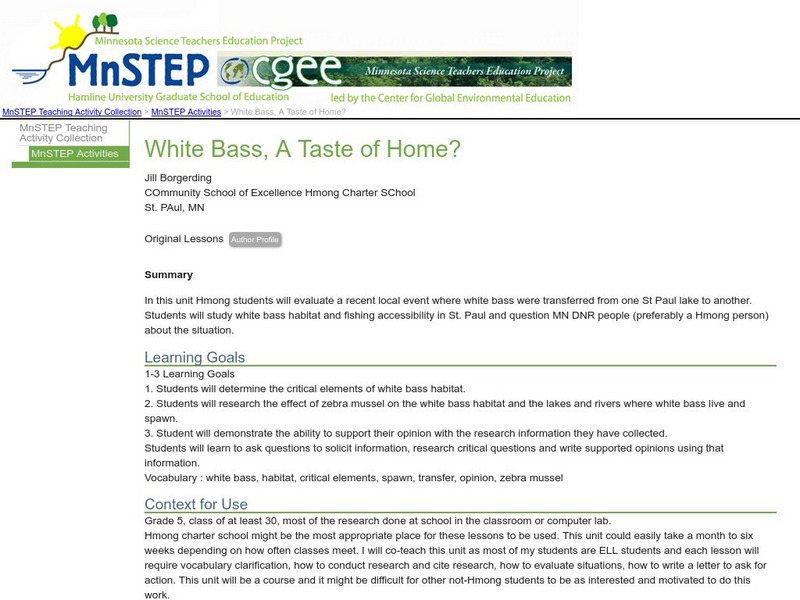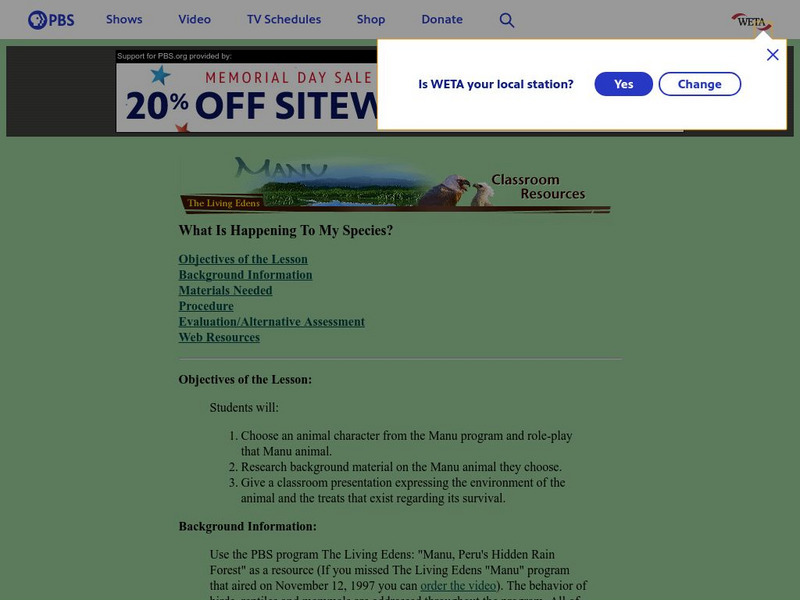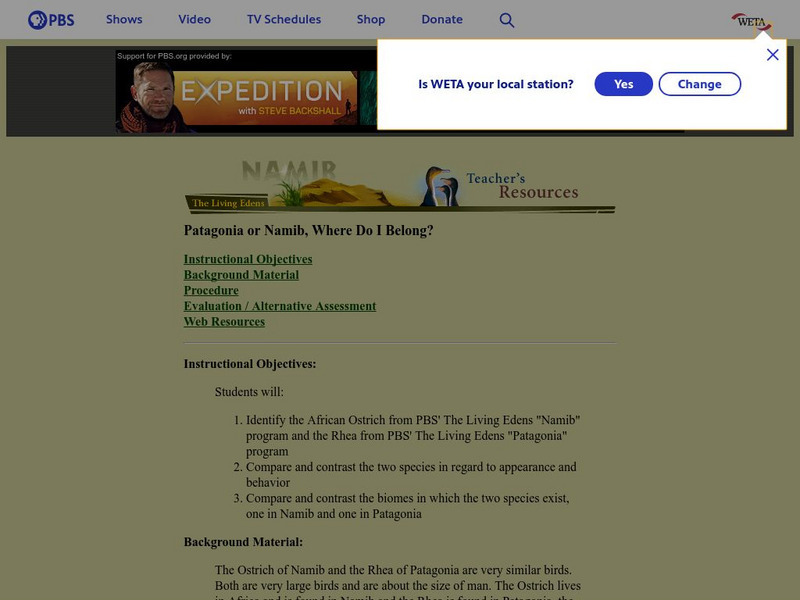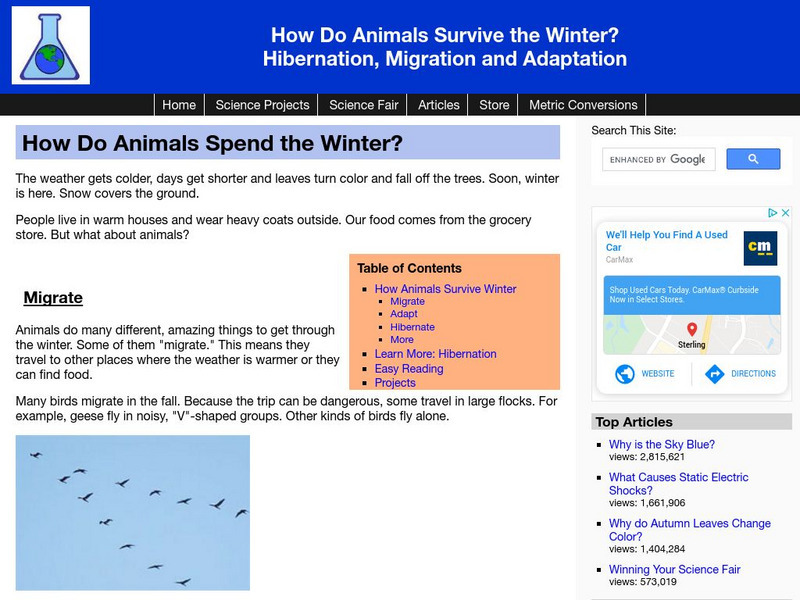Hi, what do you want to do?
Alabama Learning Exchange
Alex: Tad the Tadpole
Tad the Tadpole is designed to demonstrate how pollution in various areas affects wildlife in their native habitats. The instructional activity is designed to stress the importance of conservation for animals and their surrounding...
Alabama Learning Exchange
Alex: Continent Jump
Students will learn about animals that live on all seven continents. Students and teachers will use websites to learn additional information about the animals from various continents.This lesson plan was created as a result of the Girls...
Alabama Learning Exchange
Alex: Our Trip Around the Biomes
During this lesson, learners travel to the biomes by way of the Internet. They learn the characteristics of biomes, including animals, plants, temperatures, etc. Students then use this information to create a slideshow presentation to...
Alabama Learning Exchange
Alex: Animal Studies
This was a collaborative effort between Melanie George and Connie Roan. Students will work in collaborative groups and investigate animal characteristics, their habitats and basic needs using the Internet and library. They will then make...
Science Buddies
Science Buddies: Make a Miniature Habitat
Hands-on lesson plan in which students use mostly natural materials to build a shoebox habitat that mimics a real-life habitat for an animal of their choice.
PBS
Pbs Learning Media: Wild Kratts
Wild Kratts joins the adventures of Chris and Martin Kratt as they encounter incredible wild animals, combining science education with fun and adventure as the duo travels to animal habitats around the globe. Each adventure explores an...
PBS
Pbs Learning Media: Center Card: Build an Animal Habitat
Children design an animal habitat and talk about how the habitat provides the animal's basic needs -- shelter, water, and food -- using this block center activity. It includes three resources.
Friends of Algonquin Park
The Science Behind Algonquin's Animals: Deciduous Forest
Learn about this hardwood forest, its wildlife, and plant species. View a panorama movie of a typical Hardwood Forest in the summer.
Friends of Algonquin Park
The Science Behind Algonquin's Animals: Coniferous Forest
Learn about the Coniferous Forest and its wildlife and plant species. View a panorama of a Coniferous Forest in Algonquin Provincial Park.
Friends of Algonquin Park
The Science Behind Algonquin's Animals: Spruce Bogs
A Spruce bog is a northern type of habitat and is formed between small bodies of water and forests. Learn about a Spruce bog in Algonquin part and view a panorama movie of the bog.
Friends of Algonquin Park
The Science Behind Algonquin's Animals: Spruce Bog Panorama
View a panorama movie of a Spruce Bog in Algonquin Provincial Park.
Environmental Education for Kids
Eek!: Habitats
Take a look at some of the different habitats that are home to many plants and animals including black bears, owls and various species of birds.
Science Education Resource Center at Carleton College
Serc: Mn Step: Rock Residents: What Lives Under a Rock?
For this activity, students first listen to a story about animals that live under rocks, then go on an exploratory nature walk to see what animals they can find, living in their own small habitats. They write about their discoveries in a...
Science Education Resource Center at Carleton College
Serc: Mn Step: White Bass, a Taste of Home?
This lesson uses a real-life event to teach students about wildlife management, in this case of fish. The event was that the white bass, a fish preferred by local Hmong anglers, was moved from one lake to another in St. Paul, Minnesota....
PBS
Pbs Teachers:manu: What's Happening to My Species?
Learn about animals from Manu, create a mask depicting a selected animal and role play that animal. Discuss the selected animals and the threats to their survival in the Manu rainforest.
PBS
Pbs Teachers:namib: Patagonia or Namib, Where Do I Belong?
Compare and contrast the African ostrich and the rhea in regard to appearance and behavior. Compare and contrast the biomes in which the two species exist, one in Namib and one in Patagonia.
Kidport
Some Animals Live in Rock Caves
This site has brief illustrations and sample locations as to where the tiger, the bear, the moray eel and bat live.
Other
Switch Zoo: Where Do I Live?
In these games, you will move the animals who live in Switch Zoo to their original home continent or ocean.
PBS
Pbs: Nature: Born to Be Wild, Polar Bears
Research the diet, habitat and behavior of polar bears, and compare and contrast the issues surrounding polar bears in their environment with those of bears in the U.S. Rocky Mountains. Rewrite a human/bear encounter from the bear's...
ClassFlow
Class Flow: Animal Adaptation
[Free Registration/Login Required] Students will investigate the habitats of different organisms and the dependence of organisms on their habitat and recognize that organisms have specific traits that help them adapt so they can carry...
Science Made Simple
Science Made Simple: How Do Animals Spend the Winter?
Use this site to learn how animals use hibernation, adaptation, and migration to overcome the difficulties of winter.
ClassFlow
Class Flow: Animals and Their Homes
[Free Registration/Login Required] This flipchart was designed to help students in grades K-2 identify animals and where they live.
Discovery Education
Discovery Education: Habitats of the World
This site has a instructional activity to use to start a unit on biomes and animal habitats. This plan incorporates grasslands, temperate forests, tropical rainforests, deserts, polar ice regions, and tidepools.
Kidport
Kidport: Animal Comparisons
This site provides a very brief scenario about the similarities and differences of animals.











